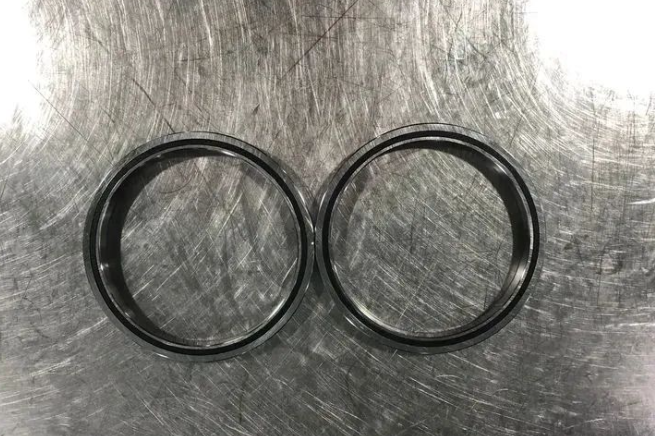
1 What is the bearing retainer?
Bearing retainer, also known as bearing retainer, is one of the main parts of bearings. Its role is to enclose and isolate the rolling body and move with it, and usually has the role of guiding the rolling body. The cage is subjected to stresses caused by friction, strain and inertial forces, as well as chemical corrosion by lubricants, additives in lubricants or substances produced by their aging, organic solvents or coolants. Therefore, the design and material of the cage are extremely important for its performance and the reliability of the bearing.
The bearing retainer keeps the proper distance between the rolling elements to prevent the rolling elements from contacting each other to reduce friction; The rolling element is evenly distributed, so that the load is evenly distributed; Guide the rolling element in the no-load zone to improve rolling conditions in the bearing and prevent damaging sliding.

2 What are the materials of the bearing retainer?
Commonly used cages are mainly divided into metal cages and non-metal cages according to the type of material. In addition, there are composite material cages. The types of cage materials are: low carbon steel stainless steel cage, bakelite/plastic (nylon) cage, brass/bronze/aluminum alloy cage and so on.
Special purpose bearing cages should also meet the requirements of special working conditions. Such as high temperature resistance, corrosion resistance, self-lubrication (used in vacuum) or non-magnetic.
1. steel cage material
Due to the characteristics of high strength, good toughness and easy processing, steel cage materials are widely used in rolling bearings. It is often made of 08 and 10 carbon steel sheet by cold stamping. In addition, it can also be obtained by other machining methods as required. Commonly used steel cage materials are 20, 30, 45, 0Cr18Ni9, 1Cr18Ni9Ti, 40CrNiMo, ML15, ML20 and so on. Steel cages are generally heat-treated to remove stress and restore plasticity. Including high temperature tempering, recrystallization annealing, etc. In order to reduce the friction coefficient of the steel cage, the surface treatment of the finished cage must be carried out if necessary.
2. Brass cage
There are two kinds of stamping and solid, stamping is only suitable for small and medium-sized. Brass plate, brass castings or brass forgings Brass has high tensile strength and mechanical strength comparable to steel plate stamping cages, but the density is relatively small and the limit speed is high. Unaffected by lubricants, including synthetic oils and lipids; Brass cages cannot be used above 300°C, and are not suitable for ammonia (e.g. cooling), because ammonia will cause seasonal breakage of brass, and the operating temperature is lower than 300°C.
3. non-ferrous metal cage materials
Different from steel, non-ferrous metals have their special properties, such as aluminum alloy with low density, good thermal conductivity, good corrosion resistance; Copper alloy has the characteristics of good thermal conductivity, small friction coefficient, good formability and high temperature. Zinc-aluminum alloy has the advantages of low cost, low density and good performance.
4. non-metal cage material
Non-metallic cage materials mainly include polymer and its composite materials, including nylon, phenolic tape, polytetrafluoroethylene and so on. The polymer material has a good match of strength and elasticity. Good sliding properties allow the polymer cage to produce little friction when it moves relative to the surface of the lubricated rolling element, which can reduce the heat and wear of the bearing. Under the condition of lack of lubricant, the polymer cage still has good motion characteristics. It can ensure that the bearing continues to run for a period of time without damage. Due to the lower density of the polymer, cages made from it have less inertia.
In addition to being made of pure materials, the cage is also modified with polymer materials. Fill or reinforce with other materials.
Bearing cages of different materials have their own special performance and advantages and disadvantages. In addition to considering economic factors, we should also choose according to actual needs.